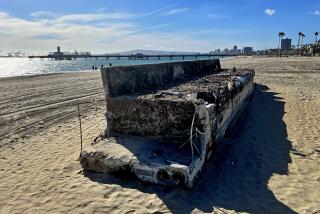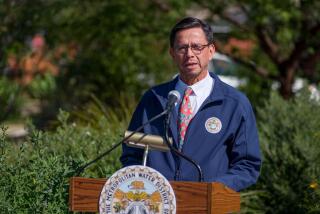Laguna Beach may clone beloved, 135-year-old tree to save it
The story of a 135-year-old pepper tree in front of Laguna Beach’s City Hall has taken a new twist.
The City Council last week directed staff to investigate cloning the tree, which multiple arborists have said is structurally unstable and in danger of falling.
Council members unanimously approved cutting the tree to a height of 12 feet in some sections, maximizing portions that can be saved, and purchasing another tree at 14 feet tall, half the height of a pepper tree in Sunland the city had suggested.
The existing 36-foot-tall tree stands near the front entrance to City Hall. The tree has “serious” structural defects, including a void in the main trunk, the city reported in June.
In July, the council directed staff to explore more options for preserving the tree, planted by homesteader George Rogers, other than cutting it to 2- or 8-foot heights or planting a replacement tree.
Mayor Pro Tem Kelly Boyd said the time has finally come to do something about the tree.
“We’ve been talking about this tree forever,” Boyd said. “So many arborists and specialists tell us it is a danger. The white fence we have in front [of City Hall] is so bad-looking for this city. I’m embarrassed when I walk up to City Hall. Let’s move ahead.”
Notices attached to a white picket fence surrounding the lawn area in front of City Hall alert people to the tree’s condition.
Cavities and voids in the tree are currently filled with concrete and expanding foam, according to a city staff report.
The concrete and polyurethane foam were used to seal off the decay cavities in the tree to prevent water and insects from entering the hollow areas, Public Works Director Shohreh Dupuis wrote in an email.
Crews placed concrete in the tree several years ago. The material is no longer considered accepted practice, Dupuis added.
Mayor Toni Iseman and Councilman Steve Dicterow were part of a subcommittee that worked with staff, landscape architects and arborists on a recommendation.
Multiple arborists recommended removing the tree unless the city could protect pedestrians and vehicles from falling limbs, according to the city.
None of the experts recommended bracing or bolting the tree because those techniques would kill the tree, Dupuis told the council.
Laguna resident Thilde Peterson contacted specialists such as biologists and botanists at several universities, including UC Davis, and learned cloning the tree could be one option.
In cloning, crews cut sections of the tree, gather seed pods, incubate them and raise saplings, Peterson said, adding researchers would charge up to $13,000 to cover four years of incubation and four trips to Laguna.
If a sapling takes root and grows, it could be placed somewhere else on City Hall property, or the city could sell saplings to the public to defray costs to cut the current tree and purchase a new tree, Peterson said in a phone interview Thursday.
It will cost the city $3,700 to cut the current pepper tree. City staff members must find a replacement tree, so that cost is unknown.
The city had suggested a 28-foot-tall mature tree that carried a price tag of $53,500, including $15,000 for maintenance and warranty.
The proposed cost took some meeting attendees by surprise.
“I don’t see a reason to spend that kind of money,” Ruben Flores, owner of Laguna Nursery, said. “The person planting that tree should stand behind their planting because they are a reputable company.”
Discussion of the pepper tree was triggered last August when the council approved hiring BGB Design Group to devise landscape improvements for the City Hall lawn area. Work included assessment of seven trees in the area.
The city will not cut the pepper tree until it completes its research on cloning and possible propagation from cuttings or seeds, Dupuis said.
Alderton writes for the Daily Pilot.
More to Read
Start your day right
Sign up for Essential California for news, features and recommendations from the L.A. Times and beyond in your inbox six days a week.
You may occasionally receive promotional content from the Los Angeles Times.







